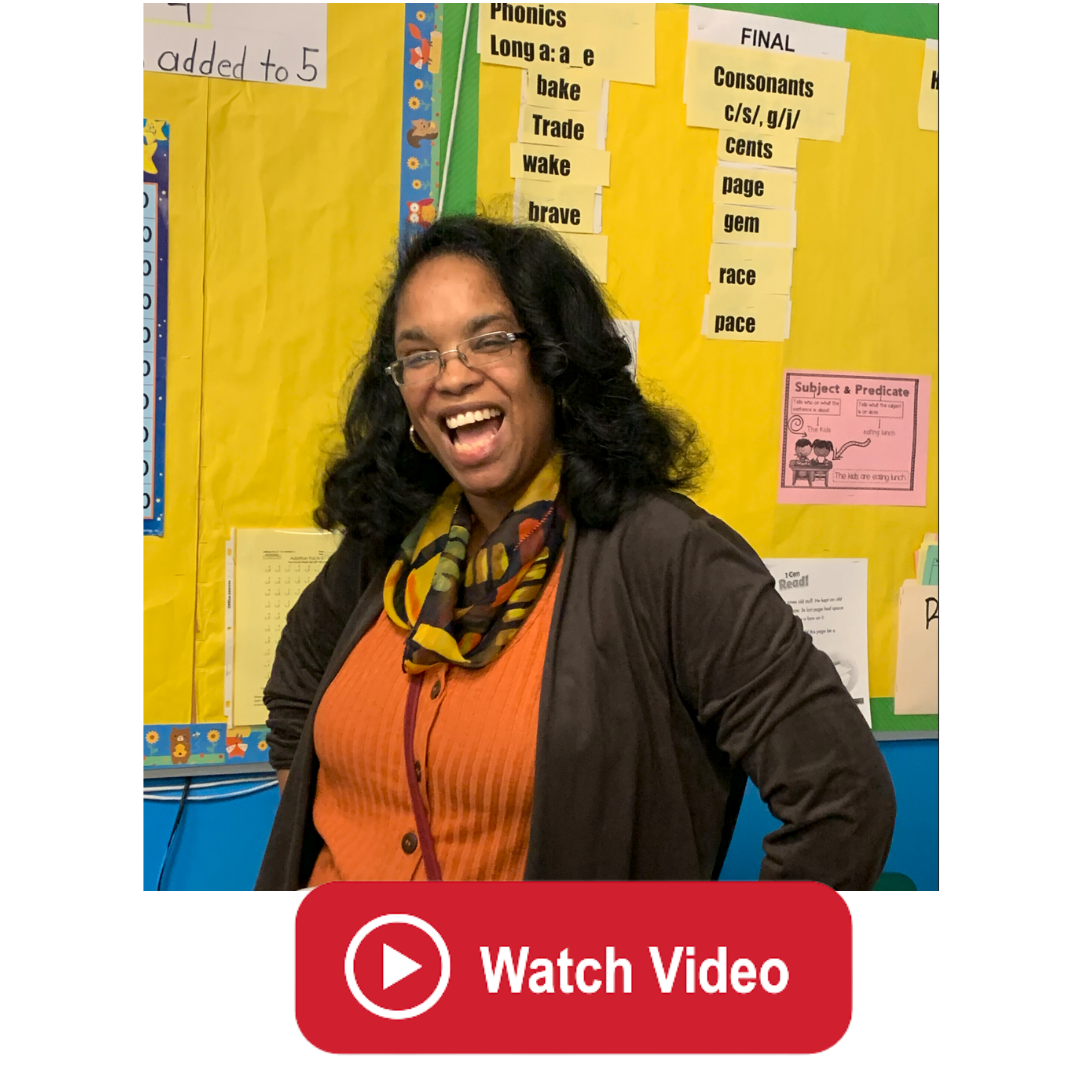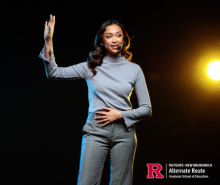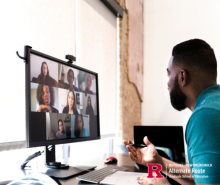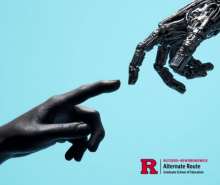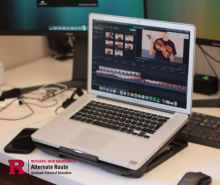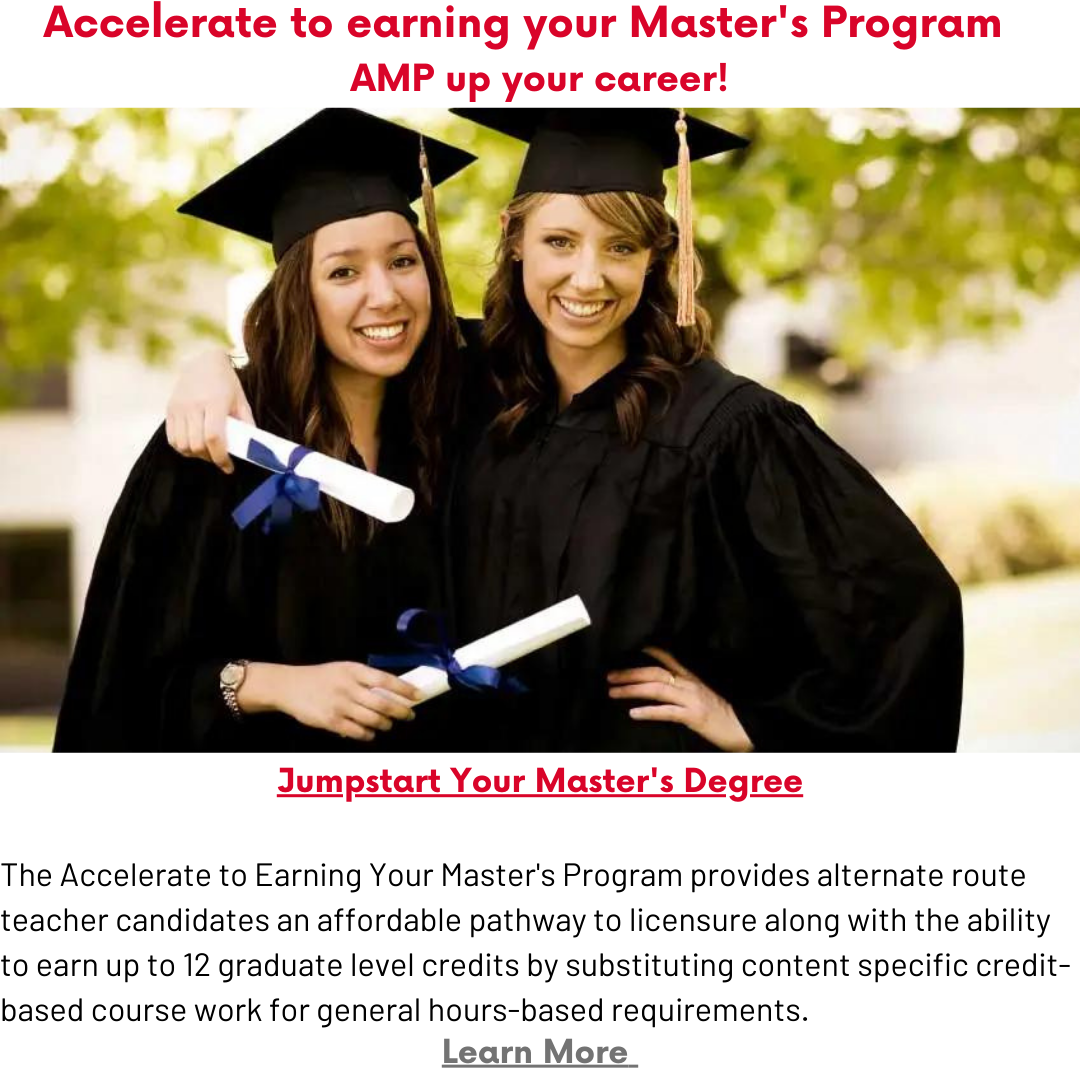How Collaboration Fosters Effective Inclusion for Special Education Students

Anyone who teaches special education knows collaboration isn't just beneficial—it's essential. Whether it's between teachers or with families, collaboration requires a mix of intention, effort, skill, and trust. High-leverage practices play a pivotal role in fostering this collaborative spirit, according to Dr. Jacinta Calzada-Mayronne, who joined new teachers enrolled with the Rutgers Alternate Route program to help foster effective inclusion practices through collaboration.
A program alum, Dr. Jacinta Calzada-Mayronne, brought a wealth of experience as a former special education coordinator for Friendship Public Charter School in addition to her current education leadership perspective as assistant principal for Stafford County Public Schools in Virginia.
Educators can explore her tips captured in this post and accelerate their proficiency with collaboration strategies for effective inclusion.
Developing a communication and interaction process
As part of the collaborative process among colleagues invested in the success of students with disabilities, Dr. Calzada-Mayronne highlights the importance of developing effective communication and interaction processes when collaborating with school colleagues.
First underscoring the importance of collaboration, she states, “Collaboration is how professionals work together. True collaboration requires intention, effort, and skill.”
She emphasizes the need for active listening skills, using open-ended questions, and accurate and descriptive statements to foster partnership among professionals. She also suggests various ways to collaborate, such as meeting weekly, data talk days, and using systems like Goal Book and Education Modified.
Sharing what she expressed as her favorite collaborative strategy, Dr. Calzada-Mayronne introduces professional learning communities (PLCs) and their benefits.
"My favorite type of collaboration is professional learning communities which can be maximized and used in so many ways,” states Calzada-Mayronne.
She goes on to explain that PLCs can meet students' needs, remedy isolation amongst teachers, build new skills, examine focused and enhanced resources, and provide greater social support for student achievement and higher levels of authentic pedagogy. PLCs, according to Dr. Calzada-Mayronne, allow teachers to “... each bring something special and unique to the team and look at students as a whole."
Co-teaching to ensure the least restrictive environment and equitable curriculum access
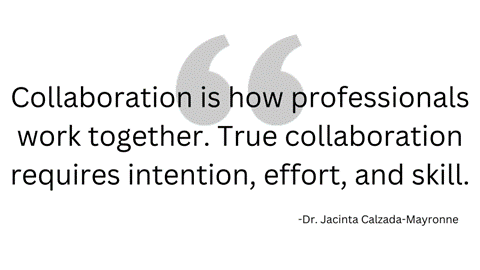
Dr. Calzada-Mayronne introduces the concept of co-teaching, a service delivery option for students with disabilities. Noting that there are six co-teaching approaches in use by schools, she cautions that some are more effective than others. She believes that co-teaching approaches depend on a few dynamics and must have a rationale, the most important of which is the success of students with disabilities.
Calzada-Mayronne states, "Co-teaching enables students with disabilities to access, in the least restrictive environment, the same curriculum as their non-disabled peers."
When deciding and planning what co-teaching strategies to use, she explains the priority is to ensure that students who have IEPs will be able to access the content. Her explanation emphasizes the importance of collaborating with school colleagues, where co-teaching partners have a strong commitment to their shared work, communicate and plan with each other regularly, share resources, decision-making, and even accountability in some cases.
Calzada-Mayronne reminds teachers that paraprofessionals and dedicated aides are part of that partnership. She wraps up the co-teaching discussion by sharing an example of her shared accountability arrangement for teaching the lessons that included assigning names to the slides she and her co-teacher created for lesson presentations.
Organize and facilitate effective meetings with professionals and families
In this section of her presentation, Dr. Calzada-Mayronne discusses the second high-leverage practice to support student achievement for students with disabilities, which is to organize and facilitate effective meetings with professionals and families.
She explains that special education teachers have a key responsibility in leading meetings with colleagues and families, including determining a student's evaluation plan, eligibility meetings, individualized education program meetings, multi-disciplinary meetings, and manifestation determination reviews. Further, she emphasizes the importance of progress monitoring, reviewing data, and gathering input from everyone who works with the student when making instructional decisions regarding services.
Finally, Dr. Calzada-Mayronne speaks about the importance of positive interactions with educators and families, including communicating in the language and format accessible to the family, using face-to-face interactions, and making phone calls to families as needed.
For this point, she wanted to emphasize the importance of using language families can understand, stating “We're actually legally required as schools to provide information in the family's home language."
Collaborate with families to support student learning and secure needed services
The third high leverage practice Dr. Calzada-Mayronne shares is to collaborate with families to support student learning and secure needed services. She outlines seven principles that promote positive interactions with educators and families, including communication, professional competence, respect, commitment, equality, advocacy, and trust. Positive interactions involve communicating openly and honestly with families, demonstrating a high level of knowledge, treating families with dignity, recognizing strengths, sharing power with families, and working together.
She suggests accommodating informal meetings when they arise, using digital communication to share information with families, creating webinars for parents, reviewing procedural safeguards, and sharing information and resources that can help them advocate for their children and obtain needed support.
During the presentation, Dr. Calzada-Mayronne shared several resources starting with Interactions: Collaboration Skills for School Professionals by Marilyn Friend and Lynne Cook, a book on high-leverage practices that includes a guide to the practices featured in her collaboration discussion. She also shared a co-teaching reading skills rating scale for supervisors, special education teachers, and general education teachers. Finally, Dr. Calzada-Mayronne provided a QR code to access a Padlet with additional resources, including a webinar for parents and information on communication with families.
Dr. Calzada-Mayronne recognizes that new teachers may struggle with collaboration and confidence in their curriculum and pedagogy. She suggests collaborating with master teachers, instructional specialists, and other professionals to internalize lessons and build confidence.
If you’re considering following your dream of teaching, Rutgers Alternate Route can offer you the support and training you need to succeed. Be sure to follow Rutgers Alternate Route on Twitter or sign up for Alternate Route’s monthly newsletter for more information and stories from the field of education.

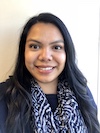 Sharlene Laud has extensive experience in education from K-12 to higher education and holds a Doctorate in Education from the Rutgers Graduate School of Education. Dr. Laud is the Assistant Director of the Rutgers-GSE Alternate Route Program in the Department of Learning and Teaching. Follow her on X @sharlene_laud
Sharlene Laud has extensive experience in education from K-12 to higher education and holds a Doctorate in Education from the Rutgers Graduate School of Education. Dr. Laud is the Assistant Director of the Rutgers-GSE Alternate Route Program in the Department of Learning and Teaching. Follow her on X @sharlene_laud